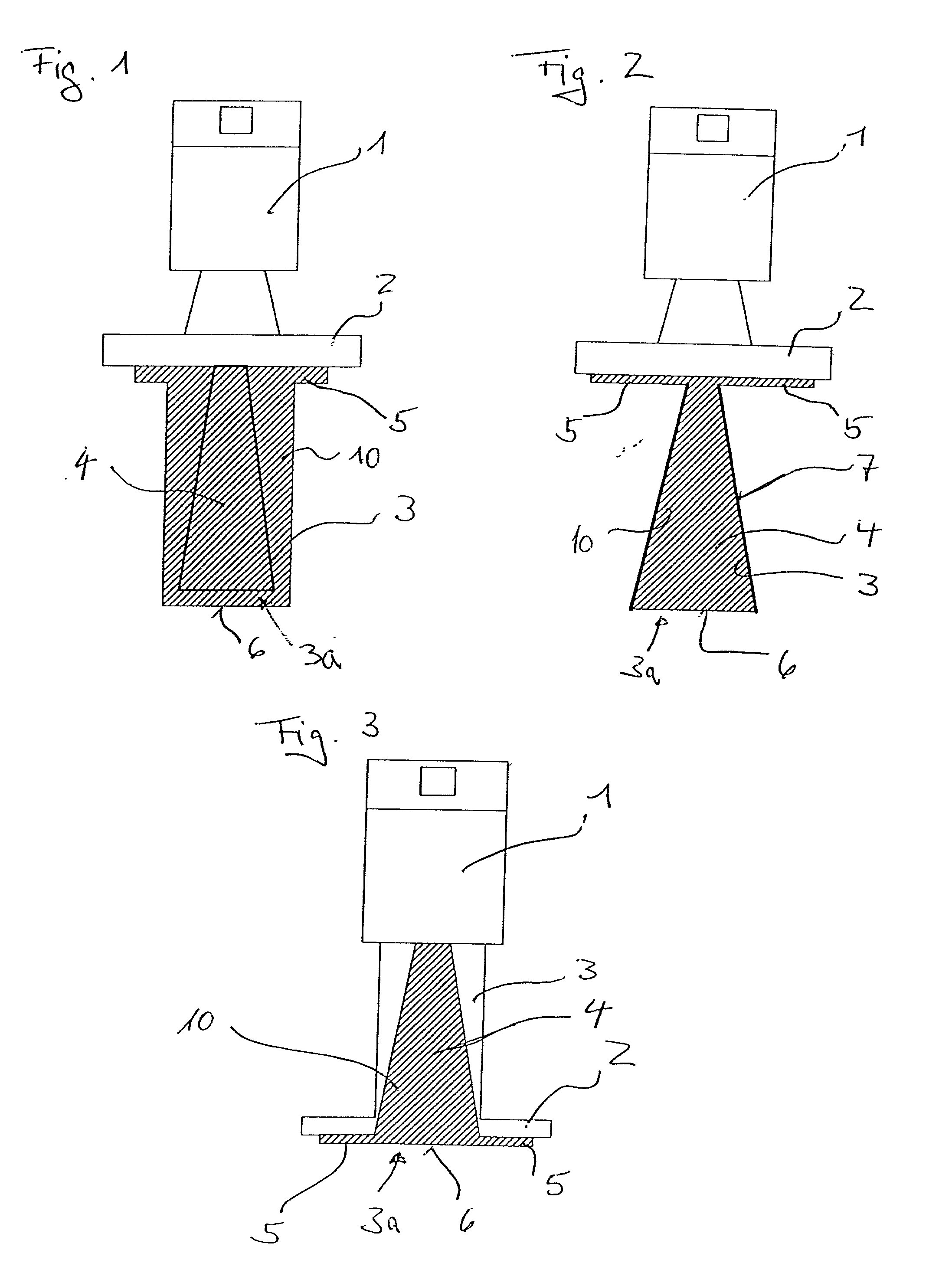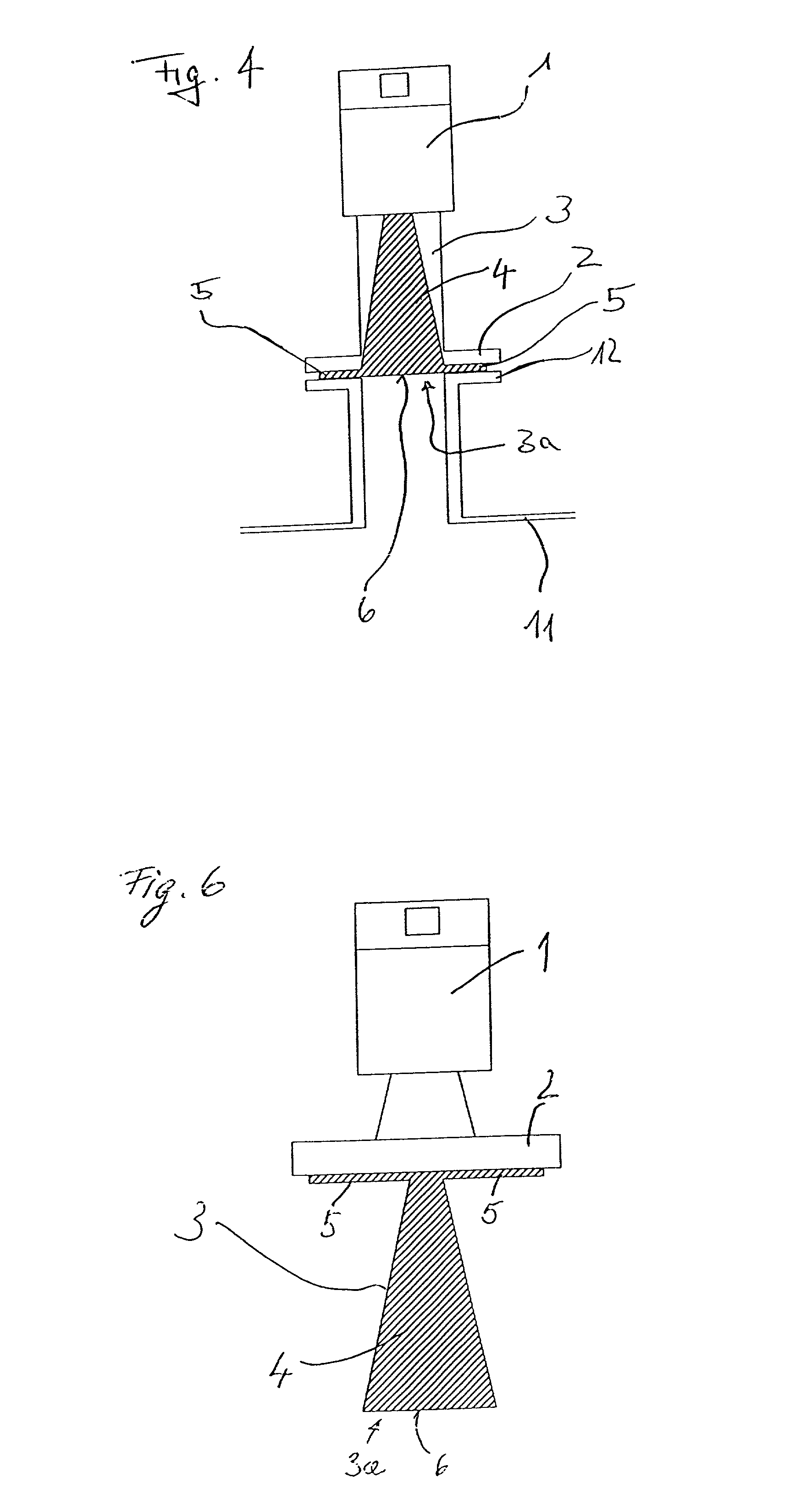Horn antenna for a radar device
a radar device and horn technology, applied in the direction of waveguide horns, protective materials radiating elements, instruments, etc., can solve the problems of inadequacies of metal antennas of the mentioned types, inability to manufacture them, and inability to meet the requirements of use, etc., to achieve the effect of simple and easy installation, simple sealing mechanism and high degree of automation
- Summary
- Abstract
- Description
- Claims
- Application Information
AI Technical Summary
Problems solved by technology
Method used
Image
Examples
Embodiment Construction
[0030] The schematic side view of a filling level measuring device 1 shown in FIG. 1 with a radar horn antenna comprises an attachment flange 2 followed by the horn antenna 3. The horn antenna 3 here is made of metal, which is completely enclosed by or embedded in a dielectric material 10. The dielectric material 10 moreover fills up the hollow space 4 of the horn antenna, and forms a cylinder on outside. The horn antenna opening 3a here is closed with the dielectric material 10, and is configured as planar face 6, which is perpendicular to the principal radiation direction of horn antenna 3.
[0031] As can be seen from FIG. 1, the coating consisting of dielectric material 10 is likewise formed on attachment flange 2, i.e. that dielectric material 10, which forms per se a cylindrical outer contour around horn antenna 3, protrudes from this outer cylinder by a certain thickness. This flange-type configuration 5 of dielectric material 10, such as can in particular be seen from FIG. 4, c...
PUM
 Login to View More
Login to View More Abstract
Description
Claims
Application Information
 Login to View More
Login to View More - R&D
- Intellectual Property
- Life Sciences
- Materials
- Tech Scout
- Unparalleled Data Quality
- Higher Quality Content
- 60% Fewer Hallucinations
Browse by: Latest US Patents, China's latest patents, Technical Efficacy Thesaurus, Application Domain, Technology Topic, Popular Technical Reports.
© 2025 PatSnap. All rights reserved.Legal|Privacy policy|Modern Slavery Act Transparency Statement|Sitemap|About US| Contact US: help@patsnap.com



